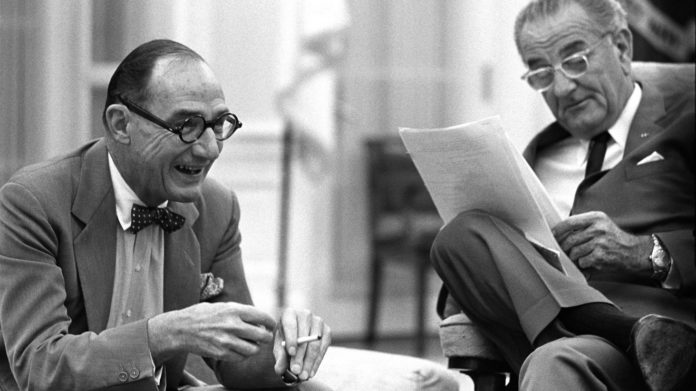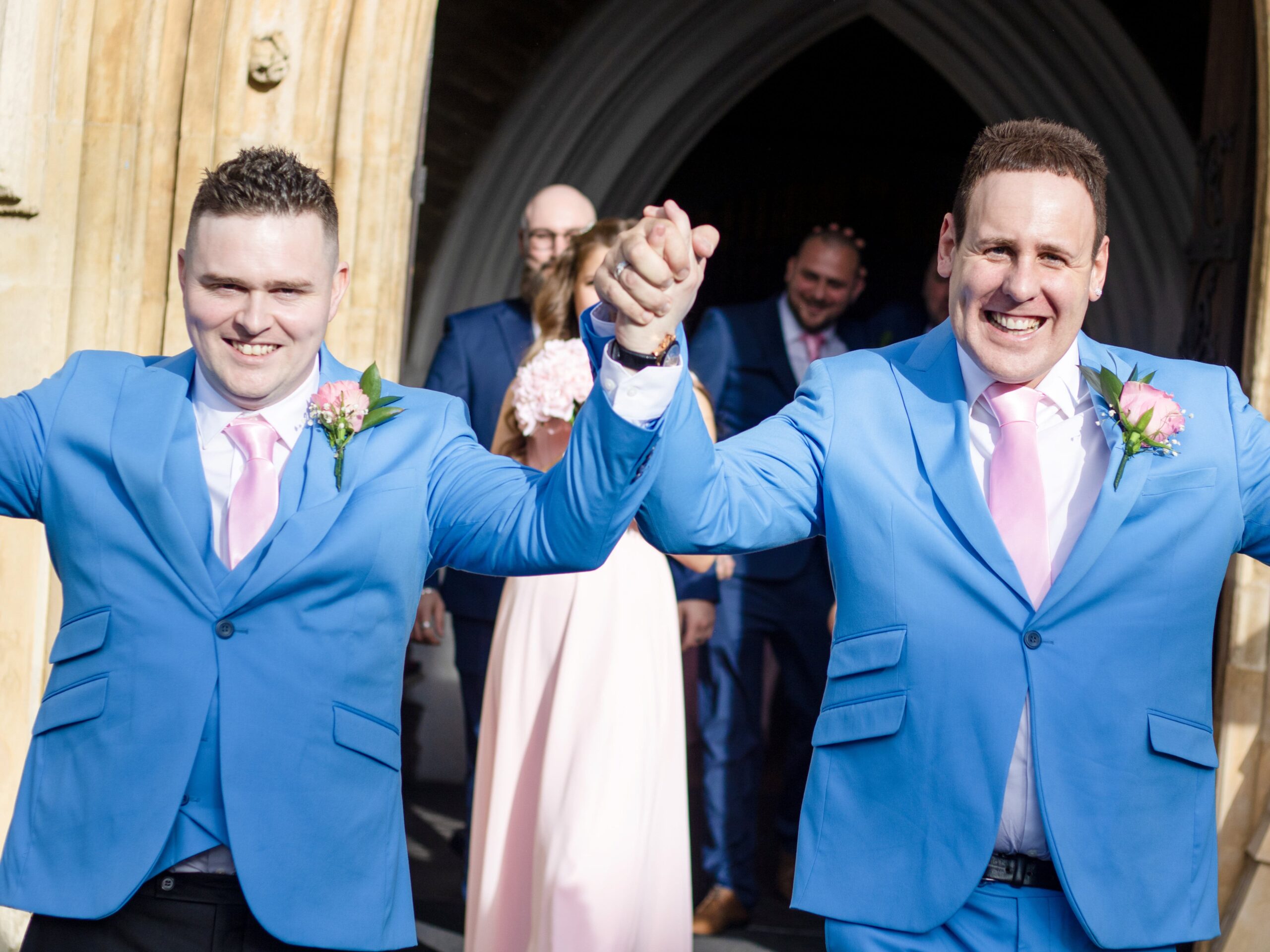
This article is reprinted by permission from NextAvenue.org.
In recent decades, LGBT people in the U.S. have gained unprecedented civil rights. We can marry our partners, serve openly in the military and fully participate in government civil service.
But for most of the 20th century, same-sex love dare not speak its name if you wanted to serve your country in almost any official capacity — LGBT people weren’t welcome in the federal government or in the armed services, unless we remained closeted about our lives.
This policy reflected the prevailing attitudes of the times — being gay was either a sickness or a sin — or both. Still, generations of gays and lesbians continued to serve our country, risking livelihoods and professional reputations if outed.
In the new book “Secret City: The Hidden History of Gay Washington,” author James Kirchick meticulously documents the stories and scandals involving LGBT people in government service and politics from the Great Depression through the 1990s.
““It felt like I was putting together a multiple season television show. I was coming up with overarching themes and plotlines.””
“In illuminating the lives of these men and women, it is my hope that this book will help them attain the place they have long been denied yet belatedly deserve in the history of the great experiment that is America,” writes Kirchick, a columnist for Tablet magazine and nonresident senior fellow at the Atlantic Council, in the book’s introduction.
“Secret City” is organized by presidential administration, covering episodes for every president, including the sex scandal targeting Sumner Welles, a diplomatic adviser to Franklin D. Roosevelt, the so-called Lavender Scare of the 1950s, the beginnings of LGBT progress during the Carter administration, and allegations of a “homosexual ring” surrounding Ronald Reagan.
Kirchick talked to Next Avenue about why the antigay purge endured, the conflicting feelings of most presidents about homosexuality, and whether an LGBT candidate has a shot at making it to the White House.
Related: Biden issues executive order to counter anti-LGTBQ laws around the country
Next Avenue: “Secret City” took more than five years to write and research and ended up being more than twice as long as originally planned. What was it like to stitch together this under-the-radar history?
James Kirchick: It felt like I was putting together a multiple season television show. I was coming up with overarching themes and plotlines. Characters come in and out, some are on a few pages and others like [FBI director] J. Edgar Hoover really loom over the book.
Similar to the Red Scare of the 1950s, the federal government wasted so many resources trying to keep LGBT people out of government. But the antigay push continued for decades. Can you explain the forces shaping the antigay attitudes?
The reason why the antigay panic goes on longer is because gay people don’t really come out of the closet until later. [Pioneering gay rights activist] Frank Kameny doesn’t start his campaign until the late 1950s. A few years later, he starts the Mattachine Society, and it never has more than a few hundred people at any one time. [The Stonewall uprising in 1969] is important and encourages more visibility in gay people. By 1975, you get the civil service commission lifting the ban on gay civil servants — that’s like 20 years after the Red Scare ends. And gay people were denied security clearances until 1995.
Reading the book, it’s clear that sex scandals of all stripes are a constant in button-down Washington. But it seemed like gay sex scandals generated even more shock value.
I think gay people in this era are defined by their sexual behavior. There’s not an understanding of the humanity of gay people. These people are defined by the people they have sex with — their very existence is a scandal. That’s why homosexuality was such a dangerous and instantly scandalous topic to the point that the term homosexuality isn’t even used. Politicians are coming up with all these terms to describe it because it’s such a taboo subject.
Given the determination of the government to prevent LGBT people from serving, why do you think they continued to try to find their places in government?
I think it’s an amazing patriotism that gay people have. They’re working for a government that doesn’t want them and is actively persecuting them. It’s a testament to these folks that they saw the better of their country than their county saw for themselves.
See: Pride Month celebrations marred by slew of anti-LGBTQ legislation, sentiment
Even when there’s progress, such as when the Carter administration convenes a meeting with gay activists, it’s mixed. The White House adviser who organized it was herself closeted.
I think that’s a recurring theme. World War II was a major moment in gay history in terms of forming a gay consciousness. All these people in rural areas for the first time come into contact with gay people. Then the Kinsey report comes out, and puts a scientistic imprimatur that homosexuality is more widespread, followed by a nationwide panic and the Lavender Scare.
Then you have Stonewall in 1969 and gay liberation, followed by Harvey Milk and other gay activists on university campuses and then the backlash in the form of Anita Bryant and the Save Our Children campaign. In the ’90s, you have Ellen DeGeneres and all this cultural visibility, followed by the [proposed] federal marriage amendment and backlash during the Bush administration
Between 2010 and 2020, the number of self-identified people has doubled, explaining what we are seeing now in some states — the backlash about teaching about sexual orientation. We go through these waves but in general the trend line is a positive one.
Throughout the book, you get a sense of some presidents and other leaders wanting to do the right thing by their LGBT employees but being constrained by their personal limitations or the era they lived in.
You look at FDR, the first president I write about. When his close aide is accused of propositioning porters on the train, his initial reaction was that he wasn’t doing it on company time. But simultaneously, he’s encouraging the outing of David Walsh, the senator from Massachusetts who’s an adversary of his. There’s not much principle here — it’s all politics. Who’s on my side and who’s on the other side.
JFK’s best friend was gay, and he has other gay male friends. JFK’s perfectly comfortable around gay men, but it has no bearing on the policies of his administration.
With Reagan, the real fear was that he would be seen as being too friendly to gay people or perhaps being gay himself. His close adviser, Lyn Nofziger, says it in his memoir. You see this sense of distancing from anything that could be perceived as gay.
A real turning point came in the mid-90s when the Clinton administration lifted the ban on government security clearances for LGBT people, reversing a more than 40-year-old policy from the Eisenhower administration. Why did you decide to end the book there?
I really felt the book is about the specter of homosexuality over Washington. It begins with World War II when homosexuality transforms from a sin and medical condition into a national security threat and that threat ends in 1995. At that point, homosexuality is no longer officially legally a bar to public service for gay people. The military would not lift its gay ban until 2011, and gay history continued after 1995, but for the purposes of my book, it felt like 1995 was the time to end it.
There’s a poignant line from activist and author David Mixner about being born three days apart from Bill Clinton but not being able to pursue the same dream of being president because he was gay. Do you think an LGBT candidate could be a major party nominee and even win the White House?
I do think [out Secretary of Transportation and 2020 presidential candidate] Pete Buttigieg could get the nomination, and I don’t think his being gay is a bar to higher office. The criticism Buttigieg got for his homosexuality didn’t come from homophobes on the right but from the queer left — that he wasn’t gay enough, whatever that means.
I’m very optimistic about the future of gay people in politics.
Robert DiGiacomo is a veteran Philadelphia-based journalist who covers food and travel, arts and entertainment and personal finance. He has written for the Washington Post, USA TODAY, the Penn Gazette and Fodor’s.
This article is reprinted by permission from NextAvenue.org, © 2022 Twin Cities Public Television, Inc. All rights reserved.
More from Next Avenue:






